All about urea
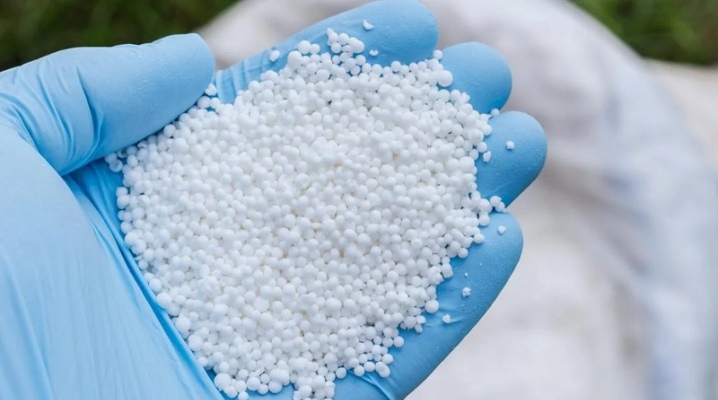
To obtain a decent harvest, a prerequisite is regular feeding and processing of plants with agrotechnical fertilizers. However, the use of various organic and mineral substances does not always give a positive result, and in some cases leads to a deterioration in the state of agricultural vegetation. A universal fertilizer that has established itself as a reliable and proven agent is carbamide or urea.
The range of its application is wide enough: it is suitable for flower, garden and vegetable crops. Therefore, it is often used as an organic component in many complex fertilizers of mineral origin.
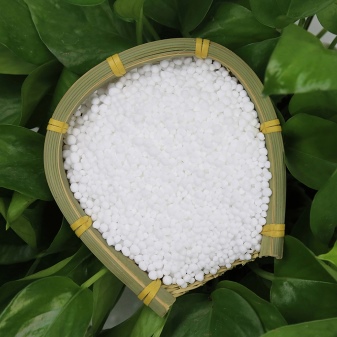

What it is?
Urea is an organic substance that is obtained chemically and is used as a fertilizer for various agricultural and ornamental crops. Low cost combined with high efficiency and ease of use make urea popular among farmers of all sizes, from owners of small summer cottages to large industrial enterprises. The composition of urea includes carbon, oxygen, hydrogen and the main component - nitrogen. VAll components of organic origin, therefore, do not pose a danger to human health. In appearance, urea looks like a white powder, from which tablets and granules are derived.
An increase in crop yields with the help of urea can be achieved only if the rate and dosage of its application correspond to the type of plants and soil acidity. Exceeding the permissible concentration of the active substance can lead to burns of the root system of vegetation. Urea dissolves easily in any liquid that is water-based. Therefore, the range of its application is not limited to its introduction into the soil, it is also used for external treatment of crops.
Upon contact with air, the fertilizer does not lose its properties, however, when exposed to moisture, it turns into a solid monolith.
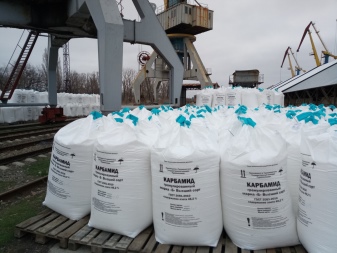

Advantages and disadvantages
Among the main advantages of urea are the following:
- fertilization helps to accelerate the growth of green mass of crops, to increase the taste of fruits with their complete safety for humans;
- increases the percentage of protein;
- negatively affects weeds;
- using it in maximum concentration relieves plants from diseases and pests without harming the plants themselves;
- convenience and practicality in use;
- environmental friendliness;
- long shelf life without loss of quality indicators.
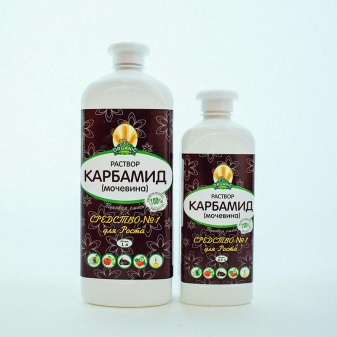
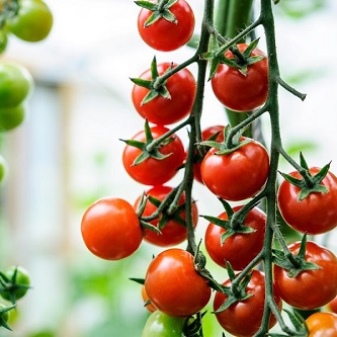
The disadvantages of the agrochemical are:
- working with fertilizer needs precautions: getting the solution on the skin causes irritation;
- incorrectly calculated concentration of the solution leads to damage and death of plants;
- a cold composition, poured into the soil, depletes the root system of the culture, weakens the seeds;
- the fertilizer is not combined with acid-containing agrochemicals, while it loses most of its positive properties or becomes toxic.
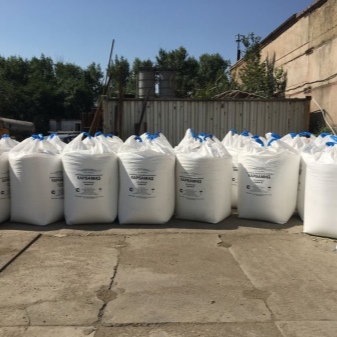

Why is it used?
Urea has a positive effect on the growth and strengthening of most agricultural and ornamental plants. The use of organic fertilizer has the following positive qualities:
- promotes an increase in protein in the composition of crops;
- significantly increases the yield of vegetable and garden plants;
- affects the improvement of the palatability of fruits;
- is an effective way to prevent and combat typical diseases, including fungal, harmful insects that pose a danger to plants;
- increases the immunity and resistance of vegetation to negative external influences: atmospheric manifestations (precipitation, frost) and stressful situations that arise as a result of illiterate care and lead to a depressed state of the plant.
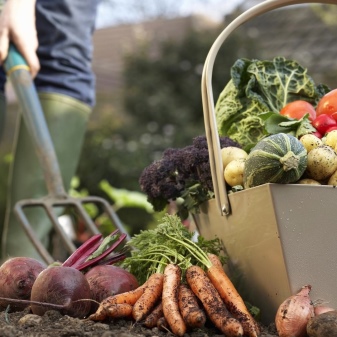
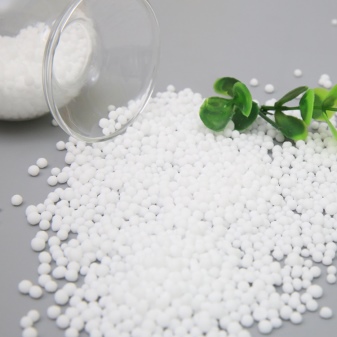
When it gets into the soil, the organic fertilizer enters into a chemical interaction with the enzymes and bacteria in it. Therefore, in order to achieve the most positive effect from fertilization, it must be applied to the soil directly during the formation and growth of the deciduous mass. Decorative flowers after application of urea are characterized by lush foliage, full and long flowering period.
Thanks to top dressing with organic fertilizer, the plants acquire a healthy appearance, enlarge in size, and the number and size of inflorescences also increase.

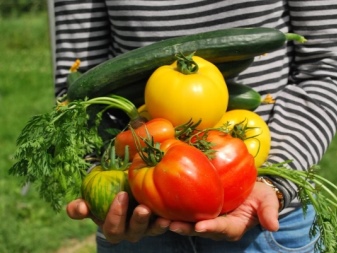
How is it different from ammonium nitrate?
The first and foremost difference between nutrients is that urea is an organic feed, while ammonium nitrate or ammonium nitrate is a mineral salt of nitric acid, which is an inorganic compound. The difference between the above fertilizers is as follows:
- the solubility index of urea is better than that of ammonium nitrate;
- despite the fact that both fertilizers are nitrogen fertilizers, the amount of active substance (nitrogen) in urea is higher;
- ammonium nitrate is limited only by its introduction into the soil, while urea can be used for foliar treatment of plants;
- due to the fact that urea is an organic fertilizer, its effect on plants is softer and sparing;
- for the disclosure of the effectiveness of urea, it takes more time than saltpeter, but a positive result after it persists for a longer time;
- urea is firmly fixed in the soil, therefore it is not prone to leaching by precipitation
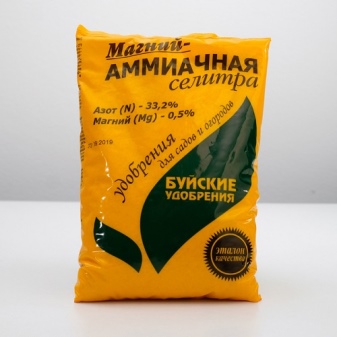
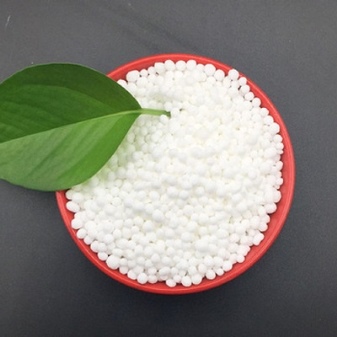
How to breed?
Urea is used as the main fertilizer or top dressing. To provide the plant with the amount of active substance it needs, it is important to observe the dosage, proportions and consumption rates, which are indicated on the fertilizer package. They depend on the type of crop, its age, structure and moisture content of the soil, time and method of fertilization.
The principle of preparing a water-based solution is simple and consists in completely dissolving the required amount of granular substance in 1-2 liters of warm water. After that, the resulting solution is topped up with the volume of pure water specified in the instructions. For spraying garden and indoor plants, use a 0.5-1% solution of an agrochemical. Cooking recipe: you should dilute 5-10 g of carbamide in 1 liter of water (50-100 g per 10 liters).

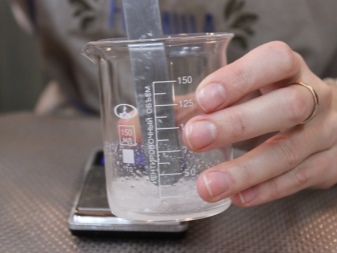
Application rates
Urea is a versatile agrochemical that is suitable for flowers (roses, gladioli, chrysanthemums), vegetables, fruit and berry bushes and trees (grapes, raspberries, currants, apples, pears, plums). They can also be fed indoor flowers. Approximate rates of its introduction are as follows:
- for vegetables: no more than 10 g per 1 m2 for spring and vegetative feeding, 30-50 g per 10 liters for foliar processing;
- for trees and shrubs: up to 20 g per 1 m2 for the main top dressing, 50-70 g diluted in a bucket of water for spraying.
It should be noted right away that the above solution rates are approximate and depend on various factors. A more accurate dosage of the agrochemical can be made on the basis of the instructions that are attached to the fertilizer. For convenience, you can measure urea in spoons or glasses. To accurately determine how much fertilizer is included in a tablespoon, you can use a simple formula: you need to weigh 10 tablespoons of carbide, divide the resulting number by the number of measurements, that is 10. According to approximate indicators, 130 g of fertilizer is placed in 1 glass (200 g), 1 tbsp ... l. - 10-13 g, in 1 tsp. - 3-4 g.
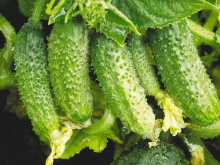


Application
The main purpose of urea is to stimulate the vegetative growth of plants, therefore the most favorable time for applying fertilizer is early spring. Experienced gardeners recommend limiting the use of urea during the budding period - in this case, the risk of a decrease in yield increases.
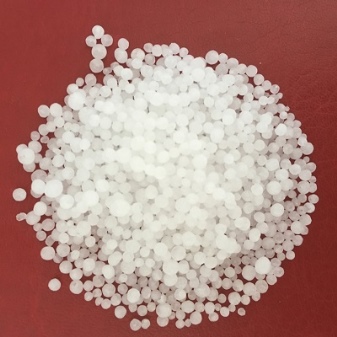

Root dressing
Once in the soil, urea enters into an active reaction with enzyme formations and bacteria in the soil, as a result of which carbon dioxide, gaseous ammonia begins to actively evolve from the substance. Therefore, if you leave granular urea on the surface of the earth, most of the nutrients will simply evaporate, and the effect of such feeding will be insignificant. The optimal depth to which it is necessary to embed fertilizer granules into the soil to obtain the maximum effect is 5-8 cm.
Features of root feeding.
- Soil cultivation with urea in the autumn period is ineffective due to the fact that the nitrogen released by the fertilizer is actively destroyed and by the end of the winter period it goes deep into the soil, from where it will be inaccessible to the root system of plants. Under perennial crops, for example winter wheat, it is not recommended to apply urea in autumn at all.
- The nutritional supplement should be correctly applied to the holes and furrows before sowing the seeds. It is advisable to cover the nitrogen mixture on top with a thin layer of earth: this will exclude direct contact of the granules with the seed and protect it from possible damage. It is possible to protect the plants from the released ammonia as much as possible by feeding the soil 1.5-2 weeks before sowing. Combining urea with potash fertilizers will also help eliminate the negative effects of ammonium.
- You can fertilize the soil not only with dry granules of the substance, but also by watering with a water-based solution. The dosage and proportions of the composition for each plant species are indicated in the previous section.
It is important to look out for signs of nitrogen deficiency in soil. He takes part in the process of photosynthesis of the plant, on which the amount of chlorophyll in the green mass of the crop depends.
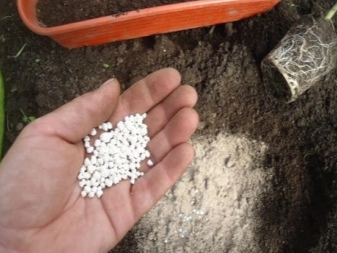
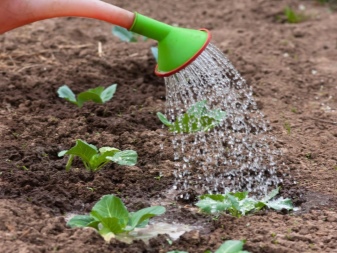
The yield and quality of the fruit depends on how much the plant is provided with all the necessary nutrients. Deficiency of nitrogen in the soil can be seen on the following grounds:
- plants develop slowly, are depressed in growth;
- foliage is small, pale green or yellowish;
- yellowing, sluggish foliage;
- leaves are characterized by a tendency to shedding;
- young shoots are thin, look weak and lifeless, weakly leafy, poorly branching;
- the plant develops a small number of buds.

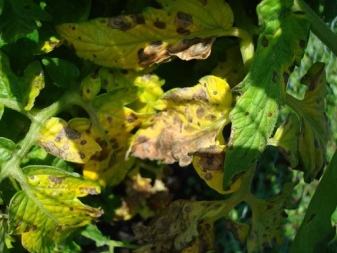
Spraying
The external treatment of plants with urea is especially popular in horticulture. It is important to remember that this method of feeding is additional to the main one and cannot completely replace it. The concentration of the active substance depends on the purpose of the treatment and ranges from 0.5% to 1%. Failure to follow the instructions on the fertilizer package can cause plant burns. The first time to spray the crowns of fruit trees should be in the spring after the completion of the leaf formation stage. It is recommended to re-process every 2 weeks throughout May and June.
To achieve the maximum effect, the solution is distributed with a small-drop sprayer on the upper and lower sides of the sheet. The longer a film of an aqueous nutrient solution remains on the surface of the leaf plates, the more actively nitrogen is absorbed by the plant. Therefore, the most favorable time for spring and autumn spraying of trees is early morning, evening hours or cloudy weather.
If it rains within 6 hours after the plant has been treated with an agrochemical, the event must be repeated.
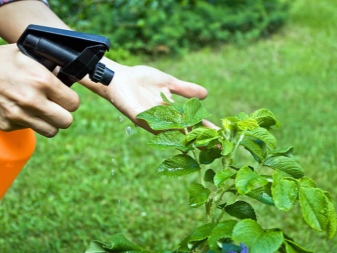

From diseases and pests
Urea is used in the garden and vegetable garden, in the country, not only as a nutritious food for plants, but also as a means of protection and fight against diseases and pests. The first spraying of crops should be carried out before the budding period, at an ambient temperature of at least 5 degrees Celsius. Pests at this time are still dormant, therefore they are inactive.
Urea is effective in the fight against such harmful insects as weevil, honey beetle, flower beetle, potato nematode, Colorado potato beetle, caterpillar. If last season there was a high activity of the pest, the concentration of the substance is increased to 700 g. The average consumption rate is 2.5 liters per 10 square meters. m.

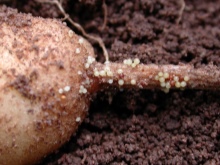

To get rid of the Colorado potato beetles, it is necessary to spread the potato tubers soaked in a solution of urea and water in a 1: 1 ratio between the rows of vegetables.
Among the popular diseases of garden and fruit trees, which urea effectively fights against, are purple spot, scab and monilial burn. For a working solution, 500 g of an agrochemical is dissolved in 10 liters of water. After getting on the green mass, the substance inhibits the development of the infectious agent, which loses its ability to reproduce. Processing the garden in the fall allows you to get rid of diseases and pests that hibernate in fallen leaves. It is important to minimize the hit of the concentrated solution on the tree trunk - this can cause burns and severe damage.
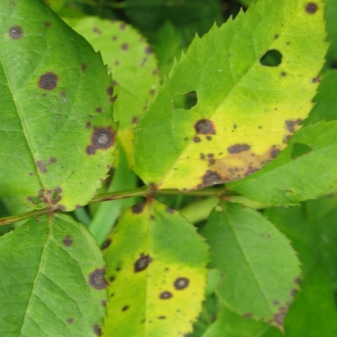
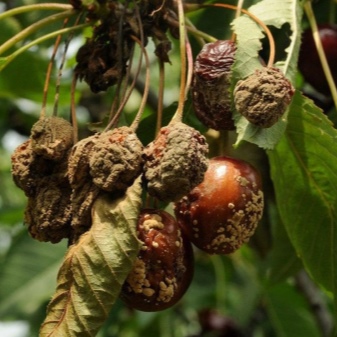
Precautionary measures
When working with urea, it is necessary to adhere to the general rules and recommendations that will help protect against the negative effects of the pesticide and are mandatory for:
- spraying must be carried out with a special spray gun, which evenly disperses droplets of the agrochemical over the entire surface of the green mass of the plant;
- preparation and spraying of agricultural chemicals should be carried out with gloves, a respirator and goggles;
- only a dry, windless day is suitable for the event;
- after finishing the treatment, it is necessary to thoroughly wash your hands, face and all exposed areas of the body, wash your work clothes.


How to combine with other fertilizers?
Experts do not recommend mixing urea with a number of other fertilizers: superphosphate, calcium nitrate, ash, lime, chalk, dolomite flour. As a result of the reaction that occurs between these components, they change their properties, and instead of a positive result for plants, undesirable consequences may occur. In addition, urea is a highly acidic fertilizer, which, when it interacts with alkaline agrochemicals, reacts with them, which completely neutralizes the nutrient composition of the nitrogen-containing substance.
It is also not recommended to combine urea and monophosphates. Both agrochemicals are based on acid, so their combination will lead to acidification of the soil, which is unacceptable for some plants (for example, cabbage, legumes, beets).
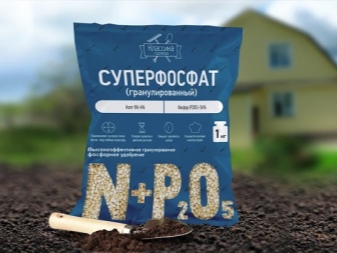
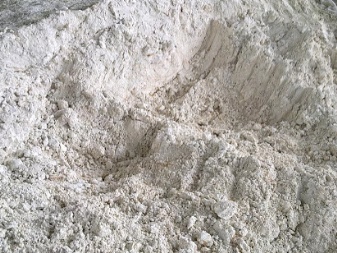
Among the most acceptable combinations, the interaction of carbamide and phosphate rock or ammonium sulfate is distinguished. However, it should be borne in mind that such formulations are not intended for long-term storage, but require prompt application.
According to gardeners, a combination of urea and iron (copper) vitriol, which significantly improves the condition of even neglected trees and shrubs, gives an excellent result. Urea is an affordable and popular fertilizer among gardeners and gardeners. Its correct use allows not only to improve fruiting and get a decent harvest, but also to protect the vegetation from many pests and infectious diseases.
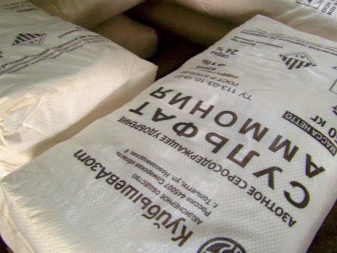
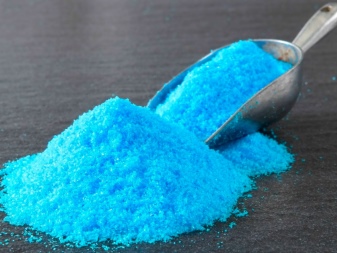
For what urea is and how to use it correctly, see the next video.













The comment was sent successfully.